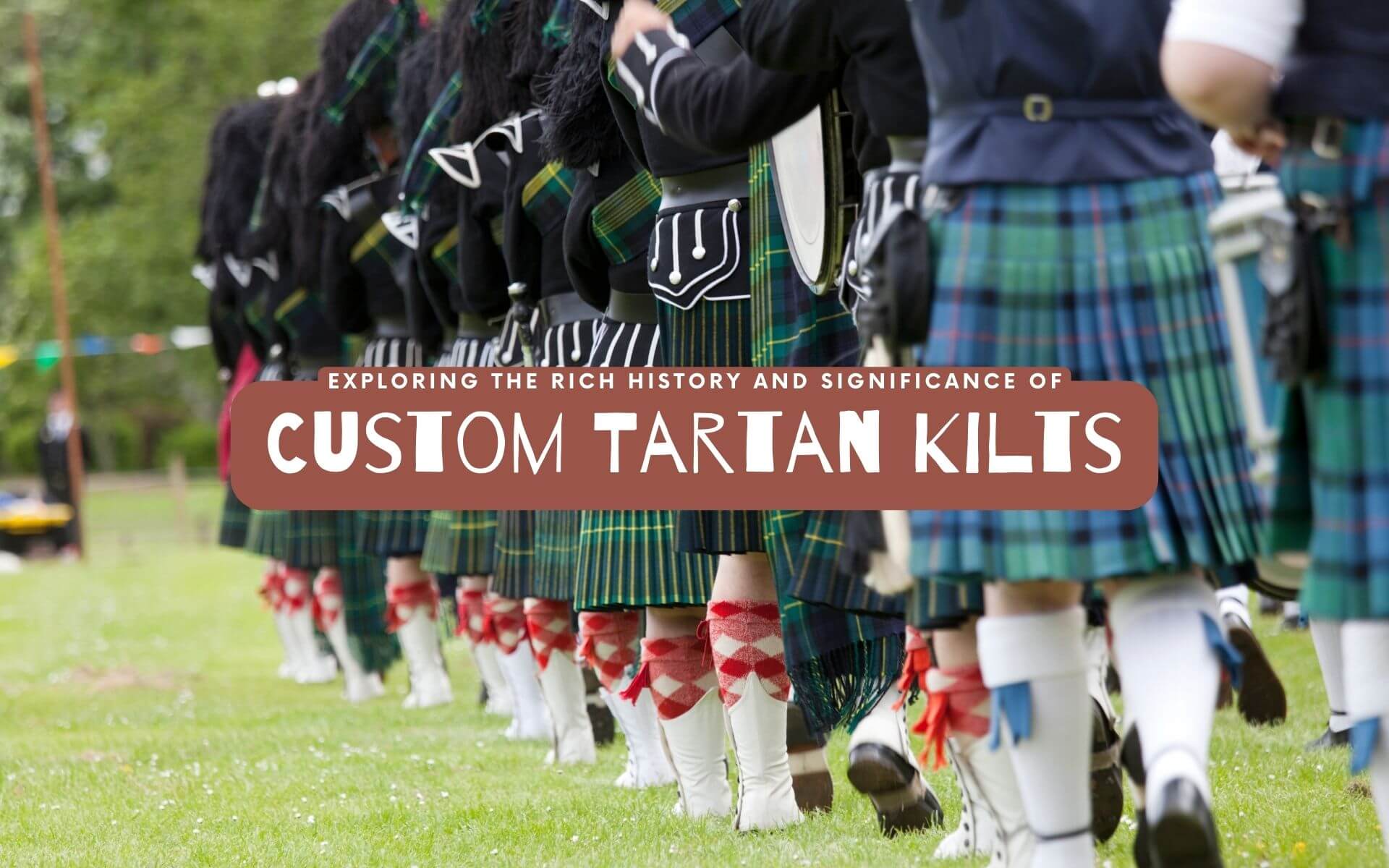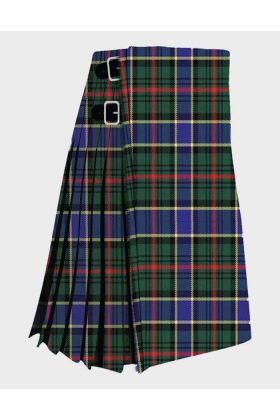The tartan kilt is one of the most recognisable symbols of Scottish culture. Scotland is a country rich in history and tradition. These colourful, intricately patterned woven kilts have been a staple of Scottish culture for centuries. We will examine the rich significance and history of personalised tartan kilts in this blog post and offer advice on creating and donning your own.
The History Of Tartan;
A tartan is a design made up of intersected bands in different colours that run horizontally and vertically. Ancient Celtic cultures, where it was employed for clothes and other fabrics, are where tartan first appeared. In Scotland, particular clans and families came to be identified by their tartan, with each clan having its own distinctive design.
Since the 16th and 17th centuries, tartan kilts have been a part of Scottish history and culture. Kilts were originally just big strips of cloth thrown over the body and belted at the waist. But, the fitted kilt, which had pleats at the rear and was invented in the 18th century, made the outfit more wearable and practical.
The Ban On Tartan;
The British administration tried to stifle Scottish culture and identity after the Jacobite revolt of 1745. The Clothing Act of 1746, which outlawed the wearing of tartans and kilts in Scotland, was one of the ways they accomplished this. The goal of the prohibition was to compel the Scots to wear and practise English customs.
The ban had a significant impact on Scottish heritage and culture. Tartans and kilts were outlawed for almost 40 years, and anyone who disobeyed the law was subject to severe punishment. It wasn't until 1782 that the ban was abolished and Scottish culture saw a comeback of tartans and kilts.
The Significance Of Custom Tartan Kilts;
The history and culture of Scotland are strongly influenced by specially-made tartan kilts. They are frequently worn at formal gatherings, such as weddings and ceilidhs. Wearing a tartan kilt can help one identify with their Scottish heritage because each tartan pattern has its own distinct history and meaning.
Selecting a tartan pattern, colours, and the ideal kilt design for your requirements are all steps in the process of making a bespoke tartan kilt. Due to the fact that each one is manufactured to order and according to the wearer's preferences, a custom kilt can take several weeks to complete.
Designing Your Own Custom Tartan Kilt;
There are a few considerations to address if you plan to create your own unique custom tartan kilt. Choose a tartan pattern that has special value for you or your family first. Secondly, choose hues that go well together and reflect your unique style. Choose a kilt design that best meets your requirements, whether it be a classic or modern style.
Accessories For Your Custom Tartan Kilt;
It's crucial to pick the appropriate accessories to go with your customised tartan kilt. They can be accessories like a belt and buckle, sporrans (little waist pouches), and shoes like ghillie brogues (traditional Scottish shoes). Your choice of accessories should complement the hues and design of your kilt.
Conclusion;
Custom tartan kilts are an essential part of Scottish culture and heritage, and designing and wearing your own can be a way to connect with your roots. By understanding the history and significance of tartan kilts, and following some simple tips for design and accessory selection, you can create a custom kilt that is uniquely yours.



















Comments